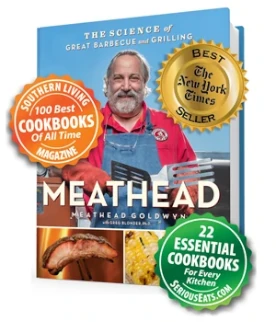In an ongoing discussion about bark on ribs and brisket, I noticed that there are some general themes that apply. And I spent some time thinking about what I had learned about turning out good BBQ …. Maybe we all take this for granted, but the bark on ribs, brisket, chuck roast, etc is really critical to it being good BBQ. It’s about appearance, but also the crazy satisfaction of crunch, flavor, and then tender meat.
I figured I’d put my two cents worth together and see if it helps clarify the “how to get great bark” conversation.
First some key elements.
This is my best advice … and I can tell you it is stuff learned over many years and I’m still learning every day.
Edit: I should point out (as Huskee reminded me down below) that there are some commercial rubs that have low salt levels and are reasonable to use directly. Meathead's and Henrik's are two sets of rubs that I have used successfully. There may well be others, but I really haven't tried them and can't say one way or another.
A few pics of different cooks over the years applying the above concepts





I figured I’d put my two cents worth together and see if it helps clarify the “how to get great bark” conversation.
First some key elements.
- Too much moisture is bad
- Moisture early is helpful, moisture late is bad
- Denaturing the protein with salt is good
- Sugar on the surface is good
- Dehydrating the meat surface is good
- LOTS of rub is good
- Common myths are bad, especially the mustard binder thing …. Way too much moisture
- I dry brine my meat (ribs, chuck roast, brisket, whatever) for several hours to overnight. 1/2 tsp of Morton’s per pound of meat. In the fridge, and uncovered. Let the meat both denature/brine AND dehydrate a bit.
- I wet the meat lightly and then apply the rub very liberally immediately before going on the cooker
- I put a tbsp of rub on per pound, roughly. But I do NOT use commercial rubs. Commercial rubs are very salty, because salt is cheap and a great way to reduce the cost and increase the quantity. This is a major reason why I make my own rubs. It allows me to control my salt and sugar content appropriately.
- I ensure the cooker has a mildly humid cooking environment with a water pan
- I never spritz
- I never wrap or foil the meat until I get really good bark formation. Actually, I almost never wrap or foil the meat unless I need to speed up the cook.
- I apply lots of smoke but keep my temps around 250F
This is my best advice … and I can tell you it is stuff learned over many years and I’m still learning every day.
Edit: I should point out (as Huskee reminded me down below) that there are some commercial rubs that have low salt levels and are reasonable to use directly. Meathead's and Henrik's are two sets of rubs that I have used successfully. There may well be others, but I really haven't tried them and can't say one way or another.
A few pics of different cooks over the years applying the above concepts








Comment